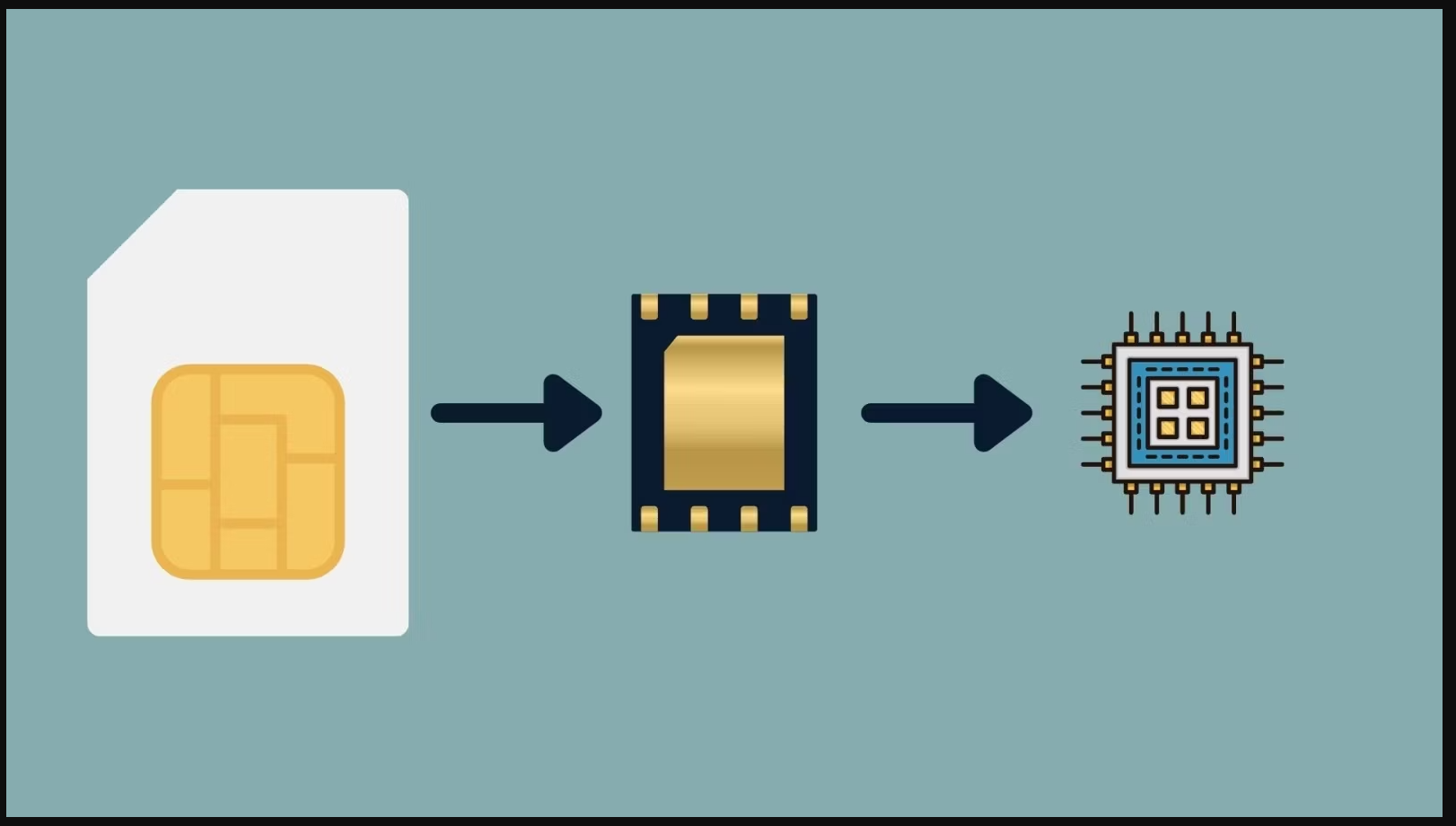An eSIM, or embedded SIM, is a digital version of the traditional SIM card. It’s built directly into a device’s hardware, eliminating the need for a physical card. With eSIM, you can download your carrier’s profile wirelessly, allowing for multiple profiles on one device. This feature is especially useful for travelers, who can switch between profiles without changing cards.

Unlike iSIM, which we’ll discuss later, eSIM is already widely used across the mobile industry. Devices like smartwatches, such as Samsung’s Gear S2 and the Apple Watch, were some of the first to adopt eSIM back in 2016. Since then, high-end smartphones have also embraced eSIM, with Apple even removing physical SIM card slots from some iPhone models.
eSIM Benefits and Drawbacks:
Pros:
1. Convenience: Easily switch between carriers or plans with a few taps.
2. Space-saving: Devices with eSIMs can use the extra space for larger batteries or other features.
3. Enhanced security: Unlike physical cards, eSIMs are harder for attackers to tamper with.
Cons:
1. Complexity: Transferring eSIM between devices can be more complicated than swapping physical cards.
2. Limited compatibility: Not all devices support eSIM, particularly mid-range smartphones.
iSIM, or integrated SIM, takes digital SIM cards a step further by embedding them directly into a device’s system-on-a-chip (SoC). This design streamlines the device’s hardware and enhances security, as the SIM is part of the chip itself. While iSIM offers compactness and security advantages, it’s not yet widely adopted in smartphones or other devices.
Currently, no smartphones or portable devices utilize iSIM technology. However, its integration into a device’s SoC offers robust security benefits, leveraging existing protocols like Arm TrustZone.
Some devices that support eSIM include:
– Google Pixel smartphones (Pixel 2 and newer)
– Apple iPhones (XS and newer)
– Samsung Galaxy smartphones (S20 and newer)
– Motorola Razr models and Edge 2022
– Some models from Nokia, Xiaomi, OPPO, and Sony
eSIM and iSIM both replace physical SIM cards but differ in implementation and features. eSIM provides convenience and space-saving advantages, while iSIM offers enhanced security through integration with a device’s chip. While eSIM is already prevalent in smartphones and wearables, iSIM has yet to see widespread adoption.
Leave a Reply